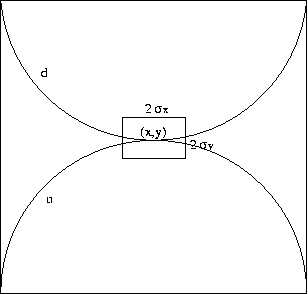Claerbout (1971) expresses the reflector mapping principle by the formula
| |
(1) |
Based on the imaging principle described in equation (1) we can propose a more general imaging condition that makes the reflectivity in (x,z) dependent on the downgoing and upgoing wavefields in the neighborhood of (x,y), shown in Figure 2 .
This more general imaging condition can be stated by:
| |
(2) |
|
cuboxfig
Figure 2 Multidimensional imaging geometry |  |
To address the multidimensional deconvolution we can make use of the helix concept Claerbout (1998). If we put the upgoing and the downgoing wavefields in helical coordinates, we will be able to treat the multidimensional deconvolution as a 1-D deconvolution.
But deconvolution is not an easy task. To have a stable deconvolution we need ![]() to be minimum phase, so an approximation of equation (2) could be
to be minimum phase, so an approximation of equation (2) could be
| |
(3) |
Now, a new question arises: Does the new imaging condition formulation equation (3) honor Claerbout (1971) imaging principle?
The answer to this question is no, equation (3) gives a shifted version of the image. The minimum phase transformation produces a shift in spatial coordinates (x,y). This shift has to be calculated to obtain a properly placed image.
Some attempts were made to implement the anteceding procedure using Wilson spectral factorization to obtain a minimum phase version of the downgoing wavefield. No convergence of factorization results were obtained. More work needs to be done to understand the causes.